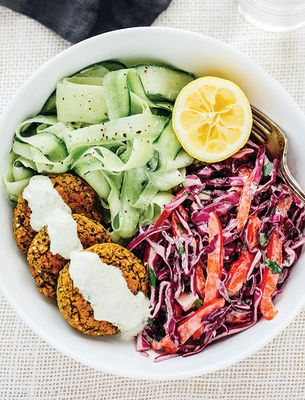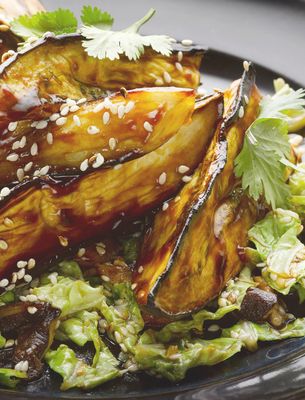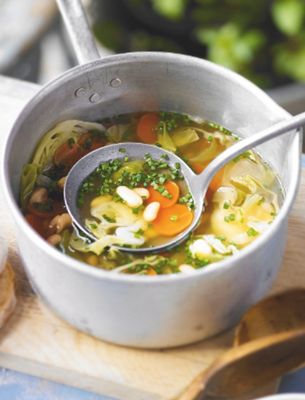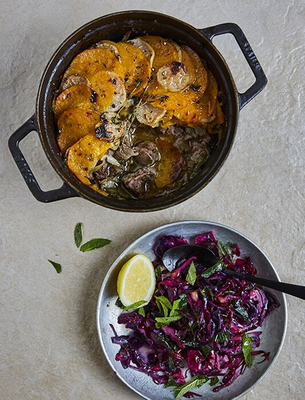6 Things You Can Make With Cabbage
What's so special about cabbage?
Did you know that cabbage is one of the oldest vegetables in existence? It's thought that the first edible cabbage came into existence in Europe before 1000 BC. But despite it's old age, the real beauty of the cabbage is its versatility. It can be prepared in many different ways and still taste delicious. Unlike other vegetables, cabbages can be pickled, fermented for dishes such as sauerkraut, steamed, stewed, sautéed, braised, or eaten raw. More recently it’s become a favourite veg for juicing to give your gut a healthy hit.
How do you choose a cabbage?
There are seven types of cabbage and the great thing is, they're available all year round. You can store a cabbage in the fridge for up to five days before it’s pungent smell wafts over the other food (this is your cue to chuck it). Choose a cabbage with firm, vibrant, unblemished leaves that feels heavy for its size. The leaves should be bright green or purple, depending on the variety, without any brown spots. Avoid cabbages that have withered, wilting, or bruised leaves.
What’s the difference between the types of cabbage?
For starters, all cabbages taste different. Green is the heartiest variety: it takes well to all cooking methods. Purple cabbage can turn a funny blue colour when cooked, so it’s best eaten raw – in coleslaw, for example. If you do want to cook it however, add a touch of acid like lemon juice or vinegar to lessen the colour change. While savoy can be used in any recipe that calls for green cabbage, its leaves are also a bit tenderer than the leaves of other cabbages, making it a great gluten-free alternative for sandwich wraps. Pok choi (yes, it is under the cabbage umbrella) is delicious simply sautéed or eaten raw in salads.
What’s the best way to cook a cabbage?
According to Neil Campbell, Head Chef at Ottelenghi’s restaurant ROVI, the best way to cook cabbage is low and slow. Braising in stock gives it a real depth of flavour: “At ROVI we always try to follow the season when deciding which cabbage to use, though red cabbage holds its texture best when cooking.”
First, prepare the cabbage by cutting the stem off, and then cut it into quarters. Then use a sharp knife to cut off the bottom stem. Slice the cabbage in half lengthways, then cut each half again to get quarters. Remove the centre stem from each quarter.
Boiling and steaming are often the preferred methods of cooking. To add further flavour, transfer the cabbage to a frying pan with a little oil or butter and fry it for a couple of minutes. Savoy cabbage and Chinese leaf cabbage are particularly great for stir-frying in a hot wok; just add soy sauce and rice vinegar for flavour and cook until wilted.
What are the health benefits of eating cabbage?
Cabbage is a nutritional powerhouse, but also low in fat and calories – 100g of leaves carry just 25 calories. It's also packed with potent antioxidants known to help protect against breast, colon and prostate cancers, and vitamin C, B and K all contributing to your overall health. Plus, they’re rich in minerals too: potassium that helps control heart rate and blood pressure, magnesium to strengthen bones and support the immune system and iron for red blood cell formation.
Anything else to know?
Cabbage is a great source of polyphenols, especially red cabbage. Kirsty Coleman, nutritionist for The Gut Stuff, explains, “polyphenols are protective plant compounds that our gut bugs love as they help support the gut. A cupped hand of red cabbage gives you around 4g of fibre (we should be aiming for 30g of fibre per day). You need fibre to feed your gut bugs and bulk out your poo to keep you regular. Fermented cabbage (sauerkraut) contains live bacteria, if it’s not pasteurised. These live bacteria may help support your beneficial gut bugs.”
Six cabbage-based dishes for fuss-free cooking.
- Easy coleslaw (Tip: Salt the cabbage and let it sit for an hour before combining with other ingredients and then drain any excess water. This helps expel a good chunk of moisture that’s hidden in the cabbage that would otherwise result in a soggy slaw).
- Aubergine, miso and cabbage salad – this mouth-watering dish makes the perfect side.
- Cabbage and soup are old friends – or foes, if you consider the infamous 90s Cabbage Soup Diet. The next time you want to add some colour to your soup, throw in some pak choi for an Asian twist. It won’t turn into mush as it simmers away and your house won’t have that tell-tale cabbage soup aroma.
- Add a crunch to stir-frys with these two easy recipes: mushroom and beef stir-fry and tofu & mushroom udon.
- Braised red cabbage may feel a little too festive for anytime other than Christmas, but it’s a great accompaniment to cooked meat, plus it keeps well in the fridge thanks to the large amount of vinegar used in lamb hotpot recipe. Swap cranberries for apple or mint for a less seasonal taste.
- For a simple but mouth-watering dish, a whole roasted cabbage couldn’t be easier to prepare. Simply, garnish with herbs, oil or butter and then cook for at least 45 minutes, cut into wedges, sprinkle with pine nuts and serve. Voila.
Browse our delicious cabbage recipes below...
DISCLAIMER: We endeavour to always credit the correct original source of every image we use. If you think a credit may be incorrect, please contact us at info@sheerluxe.com.




